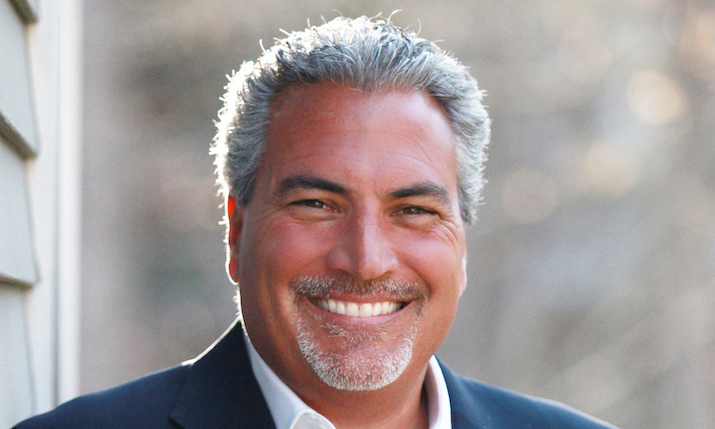Olympics, OTT and open source: TAG VS’s Kevin Joyce discusses continuous innovation in a year like no other

Kevin Joyce: “The Olympics was a great opportunity for TAG to work with essentially all the major media companies on the monitoring of their online live streaming events”
As Kevin Joyce, Zer0 Friction office at TAG Video Systems, reflects on a busy summer of sport, it’s clear that there’s one particular highlight – the Tokyo Olympics.
“That was a big event for TAG,” he enthuses. “Being an all-IP, all-software, real-time media platform and in the midst of COVID, where people had to start putting together dynamic, automated workflows, the Olympics was a great opportunity for TAG to work with essentially all the major media companies on the monitoring of their online live streaming events. I would say the highlights are scale – the number of live linear channels that our clients are putting out there. Whether it’s Amazon Prime, whether it’s Peacock, whether it’s Paramount Plus, the largest OTT platforms are just becoming exponentially bigger every single year.”
This is leading to ever-greater demands in terms of monitoring and encouraging more and more innovation.
“Clients have forced upon us to monitor any kind of source and do it with an economic or business model that made sense for them,” adds Joyce. “This is the first time in my career in several technology industries that I’ve really seen customers push the innovation of the technology companies at this level. Right now the customers are incredibly innovative and they’re demanding what I would almost say is the absolute freedom for them to create their workflows in the way that they want.”
This requires TAG to respond ever-more quickly to these demands with robust, well-written APIs, rapid dev ops and open and interoperable solutions.
“This is the first time in my career in several technology industries that I’ve really seen customers push the innovation of the technology companies at this level”
He continues: “You must work with your competition and you must work across all the other vendors in the value chain. Pointing a finger and saying you can’t do something because of somebody else, it’s just not acceptable. And that’s not just with the Olympics. The Olympics supports that because it’s such a huge event, but I think with the timing of the Olympics and with the cloud being on the verge of being viable, it has really just forced clients to get into a level of innovation that I don’t think this industry has seen really ever.”
This has also led to a huge explosion in the variety of content available, the Olympics again being the prime example.
“Whereas in the past you might only have the option of watching basketball or football, now you have the option to watch fencing, for example,” says Joyce. “If there’s an American that’s going to win fencing for the first time, we’re all watching fencing. We have no interest in fencing and we don’t even know the rules of fencing, but fencing is being broadcast and we’re watching it because we have that option. The choices that we have as a consumer have never been better, and the economics and the flexibility of these dynamic workflows are allowing broadcasters to set up cameras and stream fencing.”
On the subject of OTT, the issue of standards, or rather the lack of them, comes to the fore once more.
“OTT is the wild west,” he says. “There really are not a lot of standards, you have incredible complexity and there’s a lot of variation in how OTT is delivered, whether that’s from encoding, encryption, CDN, or bit rate. Because the consumer has so many different types of devices that they are able to watch content on, the OTT providers have a very complex problem. And so they have to create a lot of workflows and they have to monitor the quality of service of those workflows.
“The largest OTT deployments in the last three years have all been TAG real-time media platform monitoring solutions. We work in conjunction with other monitoring platforms as well, but in doing so, every single one of those is different. Every one of them has a different encryption technology, every one of them uses different encoders, and every one of them uses multiple CDNs in multiple geographies around the world. So each one of those is an engineering project with the client to deploy it and it evolves on a monthly basis. It’s a real challenge in terms of complexity and scale.”
This is where TAG comes in, offering a “Swiss army knife” solution, as Joyce explains: “We handle just about every kind of source, every kind of encryption. Our strategy is this vision of what we call Zer0 Friction. You buy one TAG licence from us, and we sell multiple licences within the deployment, depending on where they want to monitor, but the key for us is that we do not inhibit the client or restrict them from using our licence to work with any kind of source across their entire workflow. So, whether it’s 2110, whether it’s JPEG-XS, whether it’s J2K, whether it’s HLS, whether it’s DASH, the different types of sources that our industry uses at different points in the workflow is mindblowing.

Kevin Joyce, Zer0 Friction office at TAG Video Systems
“There’s no other platform that continues to innovate and put the compatibility of our transcoding device to work with any kind of source. This makes it much easier for the customer. They don’t have to think, ‘OK, I’m going to buy this monitoring tool for live production and I’m going to buy this tool for play out and I’m going to buy this tool for traditional delivery and this tool for OTT’. One TAG licence can handle any one of the sources that appear in any one of those workflows. And if they need to change their workflows on the fly, if they need to deploy licences somewhere else in the world, they can do it themselves without having to come to TAG or having to buy anything else from us.”
Recent developments in this area include support for JPEG-XS and AWS CDI.
“CDI is one of the first attempts to bring true uncompressed workflows to the cloud. TAG’s compatible with CDI. We’re one of the first vendors in the world to be able to work with CDI. It’s still early days. JPEG-XS is another one of those formats. The number of sources that get created to overcome workflow issues in the broadcast value chain is happening at an incredibly fast pace,” highlights Joyce.
“If we don’t update our platform multiple times a year with new sources that people can use for the new workloads, we would lose that Zer0 Friction value proposition that our clients have. This year it’s CDI, NDI is big in certain workflows, SRT, Zixi, different ways of transporting sources across the globe. You have to stay compatible so that customers don’t even think about saying, ‘well, TAG doesn’t do that so we have to go with somebody else’. Even if TAG doesn’t do it, they know that we will do it in a very short period of time to keep them state-of-the-art.”
“CDI is one of the first attempts to bring true uncompressed workflows to the cloud. TAG’s compatible with CDI. We’re one of the first vendors in the world to be able to work with CDI”
When it comes to monitoring, there are three key requirements when choosing a platform, according to Joyce: “It requires scale, it requires simplicity and it requires agility. It must be able to scale pretty much infinitely, without requiring a reconfiguration of their entire infrastructure to do it. The simplicity story is making sure that they never have to think about whether your system is going to be capable of monitoring something across their entire workflow. And then finally is the operational agility, being able to use our platform in the cloud, in virtual machines, on-prem and have our licences be floating, where they can use a single licence anywhere in the world without us requiring them to buy another licence, so they can move dynamically.
“And then I’d say the last piece, which has recently allowed us to really move into this real-time media platform, is opening up your system to open source tools so that customers can extract the data that we have been probing into the marketplace for 10 years, and start to turn that data into information and then get insights from that information and start adjusting their workflows based on what they learned from the monitoring. So they’re starting to do their own AI and machine learning if you will, on their own network and understanding what parts of their network are weak and where they should change their workflows so that they minimise the operational issues that they have. In our case, it’s really moved from the trivia, going from data to information, to insight and knowledge, and your platform must have the ability to do that.”
Looking to the future and that access to truly useful data is going to become increasingly valuable.
Joyce concludes: “There’s a lot of information out there, but without really processing that information and learning from it, it doesn’t do you much good. I think the days of getting an alert that there’s something wrong with your network and you have to fix it, that’s always going to be important, but what’s more important is understanding the root cause and preventing that problem proactively from happening again in the future. And that’s where we’re at right now – turning our data and information into knowledge and insight.”

